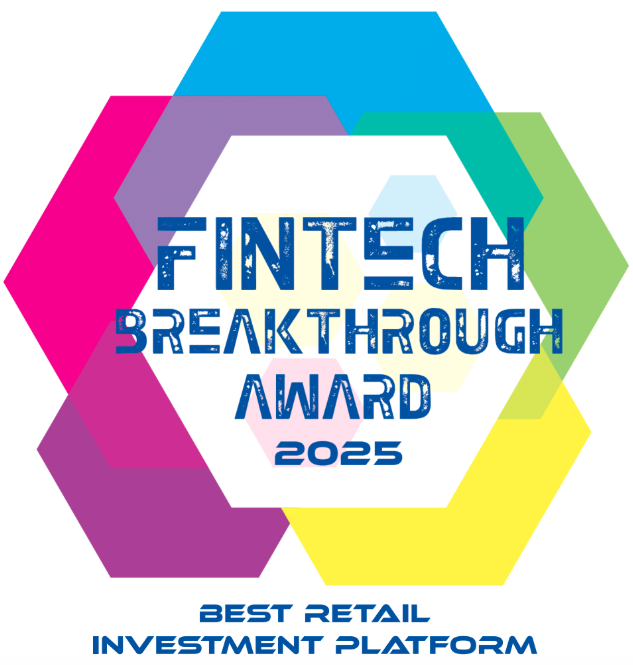The Initial Public Offering (IPO) market seems to be warming up, as companies like CoreWeave, eToro, and Hinge Health make their public market debuts. The idea of taking a company public can conjure images of celebratory bell-ringing and soaring valuations. It's an important milestone that allows companies to raise money from more investors and broaden brand reach.
However, a company can’t go public on a whim. Companies must strategically prepare if they hope to achieve a successful IPO. Here we break down the key steps private technology companies take to go public and the private companies making their way towards the public market.
1. Financial Fitness: Building a Strong Foundation
How can a company prepare to IPO? Financial fitness comes first. This involves achieving consistent revenue growth and improving margins.
- High & Growing Revenue: Many IPO investors are looking for growth opportunities. Therefore, companies preparing to go public need to show consistent revenue growth and the potential for ample investment upside. Coreweave (CRWV), which successfully went public this year, reported a whopping 420% growth in revenue. Similarly, recent public market entrants like MNTN and Hinge Health both exhibited revenue growth north of 30%.
- Given the abundance of capital available in the private markets, companies are staying private longer. Because of this, investors also expect substantial revenue by the time a company goes public. Crossing the $200 million annual revenue mark shows a company's growth and market presence. This can make it more appealing to investors. Many of the companies in the IPO pipeline like Chime have far exceeded that threshold with billions in revenue, illustrating robust scale.
- The Profitability Pivot: While the market previously rewarded "growth at all costs," public market investors are increasingly demanding profitability, or at the very least a near-term path towards it.
Both MNTN and Hinge Health exhibited narrowing losses in their S-1s, as they prepared to go public. Similarly, Caris Life Sciences disclosed decreasing net losses alongside growing revenue in their recent S-1.
- Efficient Unit Economics: Unit economics demonstrate the profitability of each customer or transaction. Key metrics include customer acquisition costs (CAC) relative to customer lifetime value (LTV). For B2B companies, low churn rates are critical indicators of strong unit economics, showing customer satisfaction and recurring revenue.
- Margins Matter: High gross margins reflect efficient delivery of a product or service and pricing power. This metric is a strong indicator of a scalable business model that can generate significant profits as revenue grows. Chime, the banking app which is looking to go public this year, achieved 88% gross margins in the first quarter of 2025, up from 79% in 2022. While each industry has different benchmarks, improving margins signals strength for companies preparing to go public.
2. Assembling the IPO Dream Team
An IPO isn't a solo act. It requires a leadership team with specific expertise and a strategic network of external partners and investors.
- The CFO as Chief Narrative Officer: While important, financial metrics alone are insufficient. A company needs a clear, compelling story that articulates its vision, market opportunity, competitive advantages, and future growth strategy to earn investor appetite. A seasoned CFO understands how to craft an "equity story" – a compelling narrative that translates complex financial data into a clear vision for future value creation that resonates with institutional investors.
While CFO hires don’t always make the news, savvy investors should take note. CoreWeave, which went public in March, brought on Nitin Agrawal, a former VP of Finance at Google and CFO at Mapox prior to their IPO. It was a clear signal of their intent to build out public-facing financial expertise. SymphonyAI announced a new CFO and new Chief Business Officer, both with experience at several public companies. While they have yet to announce IPO plans, it could be an indicator of future IPO aspirations.
- Key Hires with Public Company Pedigree: Beyond the CFO, companies often recruit senior leaders across the organization who have experience navigating the IPO process and the ongoing demands of public company compliance. These hires are critical for building the internal infrastructure to handle public reporting, governance, and heightened scrutiny.
Circle Internet Group, which will IPO this week, hired a Chief Accounting Officer and Business Development Director last year, signaling IPO preparation. Meanwhile, fintech payments platform Plaid recently hired Jennifer Taylor, former Chief Product Officer of Cloudflare, as President. The company explained, “an eventual IPO is a milestone we’re tracking towards…Jen will be a critical component of maturing our tech and product strategy as we continue to grow and evolve.”
- Prioritizing Strategic Partners: It’s not just employees that matter. External partnerships with blue chip companies can boost both a company’s growth opportunities and reputation. Partnerships can catalyze growth or ignite new revenue streams.
Just prior to its IPO earlier this year, CoreWeave announced a partnership with IBM to deliver AI supercomputers. Similarly, Circle announced a partnership with Binance in late 2024 to accelerate its growth. These partnerships can accelerate growth while demonstrating an important vote of confidence from market leaders.
- Cultivate Relationships with Strategic Investors: Venture-backed companies often already have strong relationships with investors within the private markets. They need to grow beyond these connections. As they prepare to go public they must build relationships with public market investors. This involves proactive engagement, clear and consistent communication, and a deep understanding of what different investors value. These long term relationships could translate into anchor investments for a public offering.
Omada Health for example, the virtual healthcare platform expected to IPO in early June, began introducing public market institutional investors to their capitalization table in late stage VC funding rounds. In 2022, their Series E funding was led by Fidelity Management and Research, and further contributed to by Welling Management.
Similar investment trends can be seen in other companies set to IPO this year, like Circle Internet Group. The company added significant public market investors including Blackrock, Fidelity Management and Research, and Marshall Wace in their 2021 and 2022 funding rounds. Recent reports claim that Blackrock intends to acquire 10% of IPO shares from Circle, illustrating the strategic impact of appealing to public market investors in IPO preparation.
3. The Unseen Steps: Dotting Every "i" and Crossing Every "t"
Beyond the financial and strategic, there's significant operational and legal work that companies undergo as they prepare to go public.
- Robust Corporate Governance: Public companies are required to report more information than private companies, while subject to greater regulatory scrutiny. Because of this, companies preparing to go public need to put processes and controls in place to meet these requirements. This includes establishing a strong, independent board of directors, with expertise in audit, compensation, and governance. Companies also need to implement robust internal controls and compliance frameworks to meet Sarbanes-Oxley (SOX) requirements.
- Scalable Systems and Infrastructure: Public companies need accounting systems that can handle quarterly reporting along with robust IT infrastructure to support data security and compliance. For companies preparing to go public this may require upgrading financial reporting software, implementing robust cybersecurity measures, and ensuring data integrity across the organization.
- Legal Housekeeping: This is unglamorous but critical work for IPO readiness. Companies need to review all existing contracts, intellectual property, and potential legal liabilities to ensure there are no surprises that could derail the IPO process or surface post-listing. This often involves a thorough "due diligence" process by underwriters and their legal counsel.
- Talent Retention and Incentive Structures: An IPO can be a long-awaited liquidity event for employees that have stock options. Companies need to plan how they will continue to incentivize and retain key talent, as existing equity becomes liquid. This often involves new compensation plans, including restricted stock units (RSUs) or new option grants for post-IPO employees.
- Readying for the Spotlight: Being a public company means living in a fishbowl, with a stock that trades at the whims of market sentiment. Management needs to be prepared for constant scrutiny from investors, analysts, and the media. This includes media training, preparing detailed investor presentations, and developing a clear communication strategy.
4. The Final Countdown
With all the groundwork laid, the final phase involves bringing in the experts who will guide the company to the public markets.
- Hiring Underwriters: Investment banks play a pivotal role in the IPO process. They act as underwriters, advising on valuation, structuring, and ultimately marketing the shares to institutional public investors. They help navigate regulatory filings (like the S-1 with the SEC) and manage the "roadshow" where management presents to potential investors.
Companies typically interview several banks to find the best fit. Netskope recently made the news after reportedly hiring Morgan Stanley to lead its future IPO. Databricks reportedly hired JPM and Goldman as well.
- Confidential S-1 Filing: Under the JOBS Act, eligible emerging growth companies, which include many private tech companies, can submit their initial S-1 registration statement to the SEC confidentially. This allows companies to receive feedback from the SEC on their disclosures without immediately making their financials and business details public. It provides flexibility to address concerns and refine the filing before it's subjected to public scrutiny. If the company chooses to delay their public offering, they can altogether avoid publicly disclosing key information.
Companies that have confidentially filed for an IPO this year include Figma, StubHub and Voyager Technologies. - Public S-1 Filing with the SEC (Going Live): Once a company is ready it will publicly file its S-1, at least 15 days before it begins its roadshow. This company filing is the official "launch" of the IPO process in the public eye. The document, often hundreds of pages long, contains comprehensive information about the company's business, financials, risks, and management team. This allows potential investors to conduct their own due diligence. It also includes the offer price and number of shares to be offered.
Recent companies to publicly file their S-1 include Caris Life Sciences, Chime, Klarna, Omada Health, and Circle Internet Group.
As the IPO pipeline continues to grow, we’re seeing more private companies preparing for a public market debut. No company can control market conditions. However, with a strategic approach to growth and financials and a strong team, companies can set themselves up for success, even with market volatility.
So what companies are taking the steps to potentially prepare to join the public stock market? Here we breakdown private companies at various stages of the IPO process.

While many investors eagerly await tech IPOs, accredited investors don’t need to wait until to invest in promising technology companies.
EquityZen’s platform has enabled investors to “beat the bell”, completing over 45,000 investments in over 450 late stage companies. Start exploring today.
.png?width=96&height=96&name=image%20(5).png)



.png?width=812&height=446&name=Blog%20Cover%20Videos!%20(4).png)


